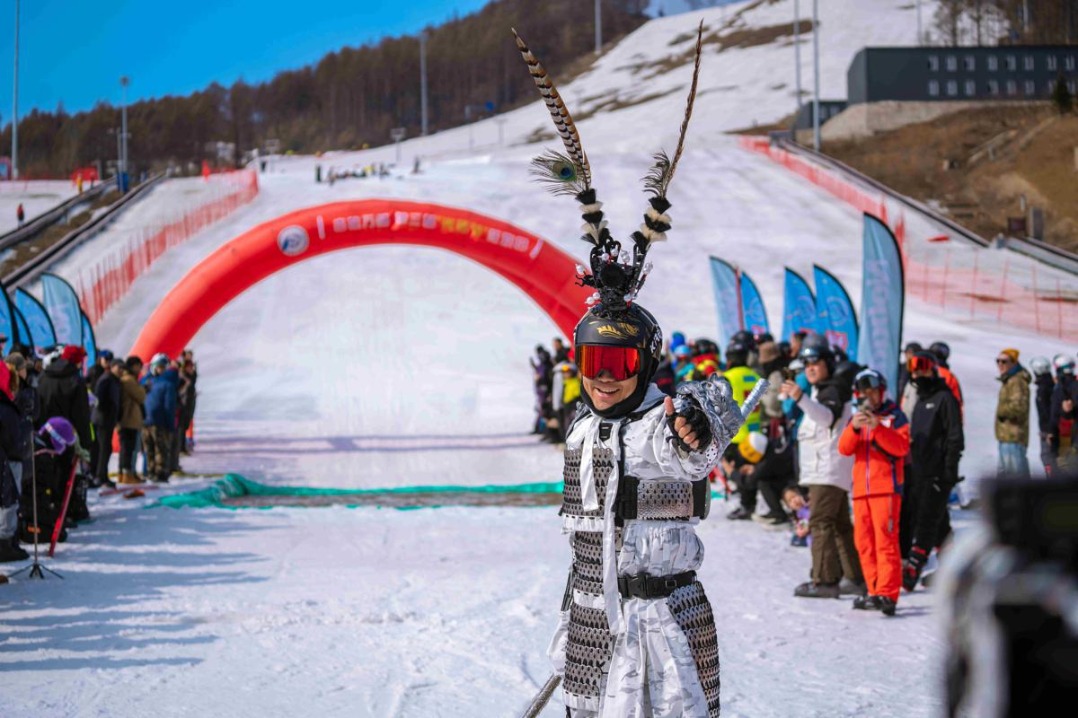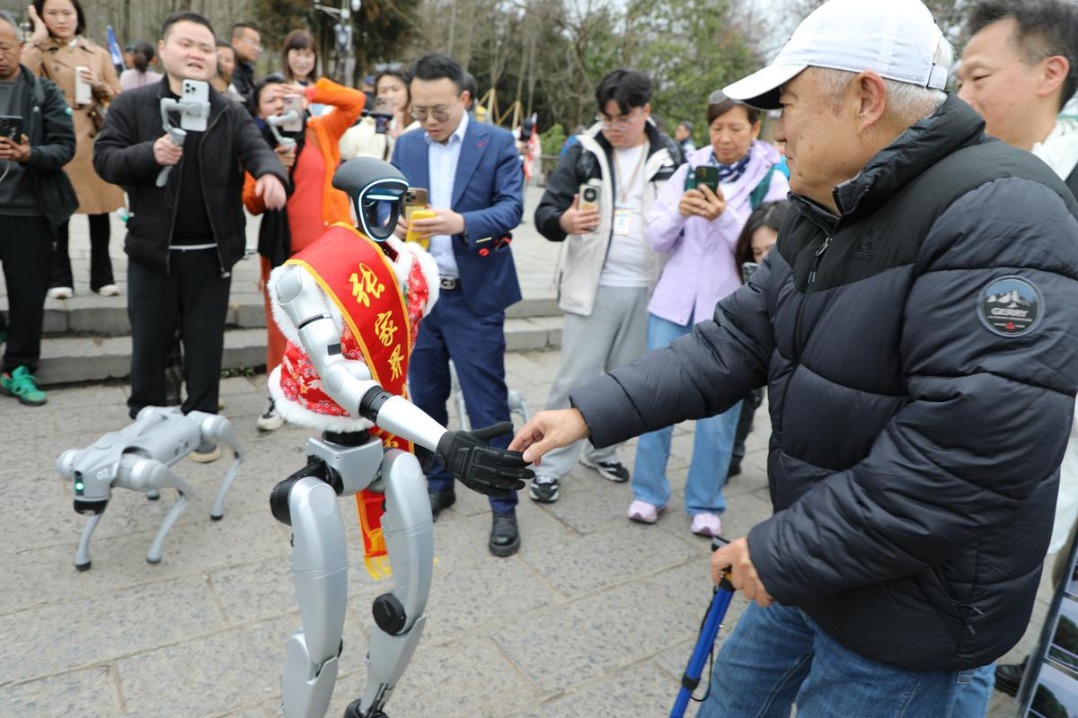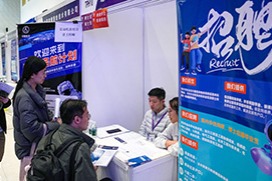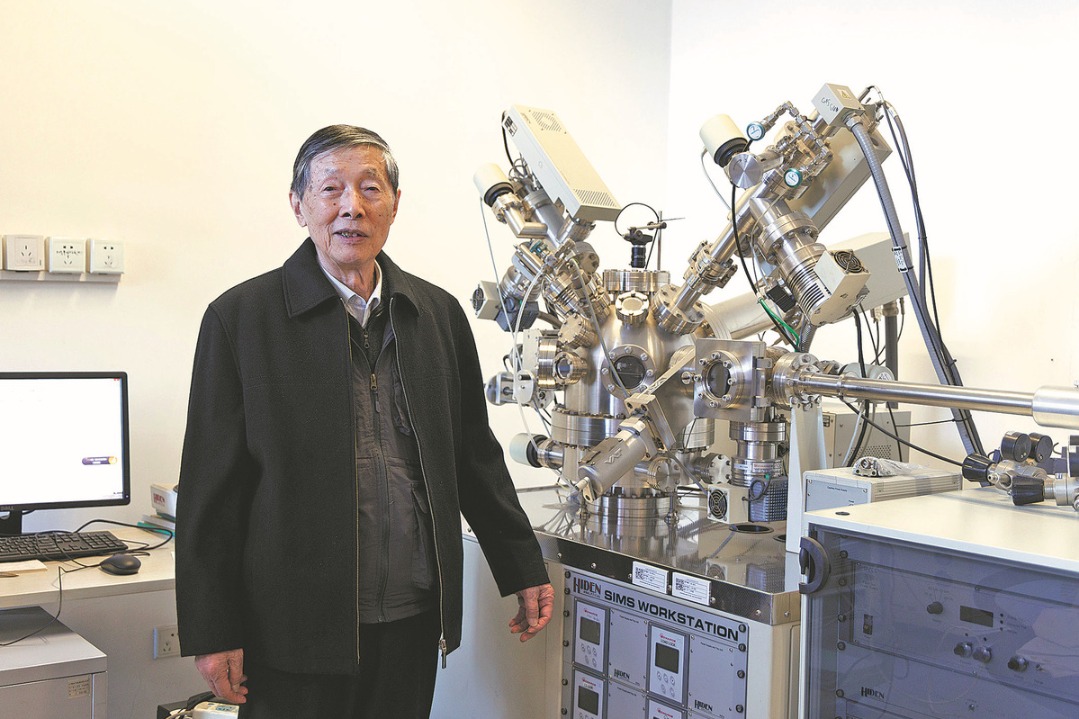PLA constantly honing combat skills

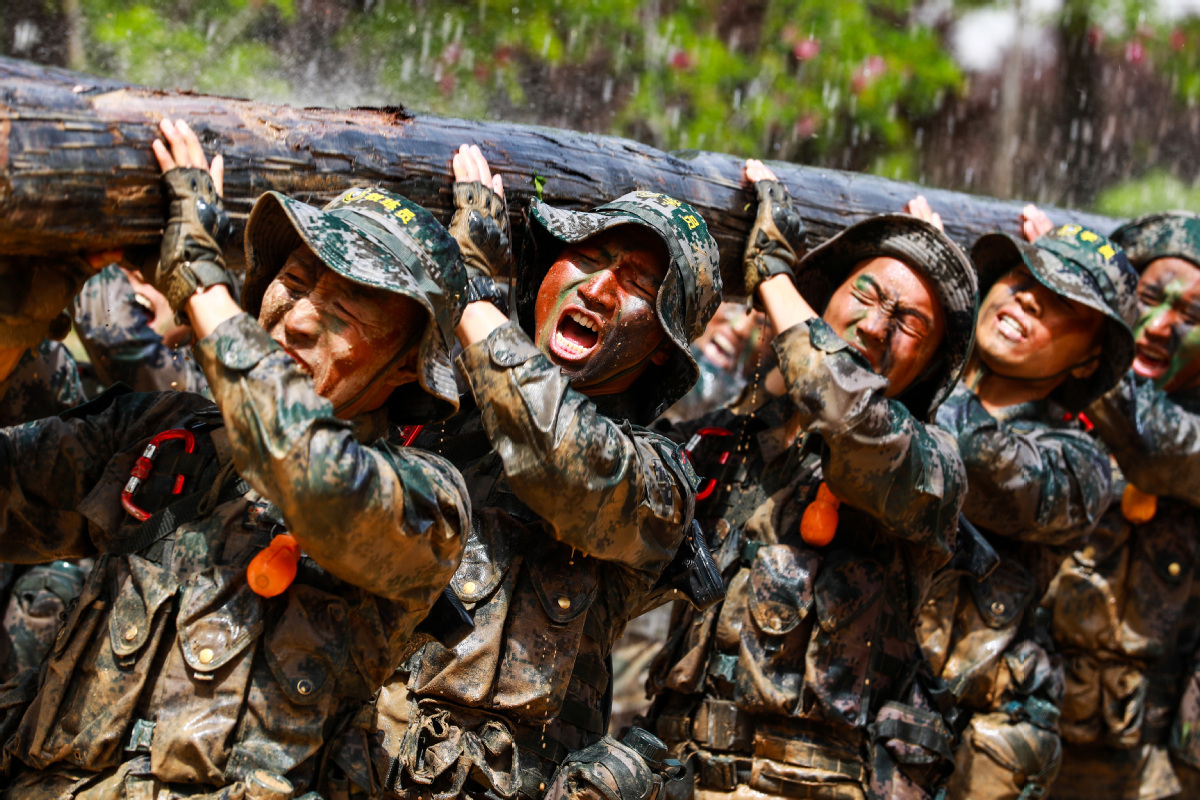
Editor's Note: To mark the 95th anniversary of the founding of the People's Liberation Army, China Daily is publishing a series of stories elaborating on Xi Jinping Thought on Strengthening the Military, expounding its main ideas from different angles.
To Senior Captain Xu Ying, the past 10 years have been a decade full of struggle, challenges, aspirations and accomplishments.
"It is a privilege for me to be a witness to the birth and growth of the People's Liberation Army Navy's aircraft carrier forces," said Xu, the executive officer of the CNS Shandong, the country's second carrier after the CNS Liaoning, and the first one built domestically.
Eleven years ago, he was one of the first veteran aviators selected by the PLA Navy from the PLA Air Force to undertake training to fly carrier-borne fighter jets.
"When I boarded the CNS Liaoning for the first time in 2011, the carrier was still in the middle of the outfitting process. We were receiving training at that time to pilot carrier-based fighter jets. During the training period, we were given a guided tour of the ship," he recalled. "I was full of curiosity and excitement as we walked through the massive vessel, which seemed like a maze to me. And then I got lost inside it until someone led me out."
The Liaoning was refitted from the unfinished Soviet-era carrier Varyag. It was commissioned in September 2012, becoming the PLA Navy's first aircraft carrier.
In the winter of 2014, after three years of stringent training, Xu and his fellow pilots conducted their first landing on the Liaoning, becoming the first carrier-borne fighter jet aviators trained by the Navy.
In the following years, Xu was named commander of a J-15 fighter jet force and worked hard to lead his men to explore training methods and combat maneuvers.
Conquering many obstacles and challenges in the training, several groups of Navy pilots have been qualified to operate fighter jets based on the carrier. Many have been exposed to fierce live-fire exercises that included breathtaking combat scenarios, and they are capable of undertaking round-the-clock, all-weather operations, he said.
Now, as executive officer of the Shandong, the veteran aviator is working relentlessly to hone his crew's skills and combat readiness.
"We have gone through a host of training tasks like live-fire drills, long-distance deployment and resupply operations, and have explored and verified development approaches for carrier forces that fit with our traits.
"Along with the rapid improvement in the operational readiness of the Liaoning and Shandong, it will become frequent for the two carriers to conduct joint exercises," Xu said.
The accomplishments of Xu and his fellow naval aviators and sailors on Navy carriers are phenomenal and representative. They symbolize the tremendous advances made by the PLA as the result of the unprecedented attention placed on combat training and interservice operations since President Xi Jinping became the armed forces' commander-in-chief.
Xi, who is also general secretary of the Communist Party of China Central Committee and chairman of the Central Military Commission, has repeatedly emphasized the importance of combat readiness and joint operation training for the military since he was elected as the top leader in late 2012.
Each time the president has made an inspection tour of a combat unit, he has debriefed commanders about training and exercise work and has ordered them to carry out more realistic battle exercises to hone the troops.
The commander-in-chief would talk with soldiers, sailors or pilots about their combat skills, encouraging them to continue improving their capabilities.
It is not uncommon for Xi to go to the training field to watch troops' drills and use of hardware. He has also boarded infantry fighting vehicles, large destroyers, nuclear submarines and bomber aircraft and asked the operators to show how they control the weapons.
The president's instructions on the armed forces have been theorized as Xi Jinping Thought on Strengthening the Military, which was written into the CPC Constitution as the guiding principle for defense and military development at the 19th National Congress of the CPC in October 2017.
The report to the 19th National Congress, which was read by Xi at the event's opening ceremony, stated that the core mission for the Chinese military is to safeguard the country's sovereignty, security, territorial integrity and interests in modern warfare, so it must get ready for "military struggles" with adversaries from various directions and continue to strengthen fighting forces.
At a top-level military training conference in Beijing in November 2020, Xi emphasized that the military must focus on preparing for wars and enhance overall training capability under realistic and interservice combat conditions.
The military should keep advancing reform and innovation, accelerate the construction of a new military training system and comprehensively improve its ability to win, he said.
The president said training is vital for military missions and serves as the fundamental way to generate and improve combat capability.
Xi also pointed out the importance of strategic planning and top-level design to reinforce not only actual combat and joint combat training, but also training management, the scientific and technological literacy of officers and soldiers, and the recruitment of talented professionals.
Starting in 2018, Xi has issued a Central Military Commission order each year to announce the beginning of the armed forces' annual training plans.
In the order for 2022, he requested that the military further strengthen its training and exercises this year to enhance its operational capabilities and combat preparedness.
Service members must closely observe and accurately understand the changing situations in national security and military rivalry, and must be focused on developments in science, technology, combat patterns and potential adversaries, according to the order.
The armed forces are required to integrate their training with front-line operations, strengthen joint operation exercises, improve troops' capabilities in using new technologies, and continue optimizing training methods. The goal is to ensure that the troops can always win wars, the order said.
It asked service members to display high morale and outstanding training accomplishments to celebrate the upcoming 20th National Congress of the CPC, which is scheduled to be held in Beijing later this year.
Shao Dan, a researcher at the PLA Academy of Military Science, said a core element of Xi Jinping Thought on Strengthening the Military is the prioritization of joint operation capability.
"The commander-in-chief has repeatedly stressed that the top priority in the PLA's training and exercise work is to strengthen its capability for interservice combat operations," she said. "Consequently, the PLA has been focusing on its information collection and processing capacity and systemic support ability, and continues to transform its combat units into elite forces capable of using small groups of troops and multiple branches of service to carry out joint operations."
Lieutenant Commander Jiao Yunqiang, chief of combat operations on one of the PLA Navy's best submarines, said that thanks to Xi's emphasis on combat training and the Navy's modernization endeavors, his submarine now spends a much longer time in deep ocean areas for patrols and training and has been equipped with many new weapons in recent years.
Having new weapons does not necessarily translate into stronger capability, Jiao said, adding that all crew members understand that stringent training and drills are the ultimate key to invincibility.
"New personnel on the submarine, no matter whether they are officers or sailors, are required to learn and personally check layouts and detailed arrangements of their equipment so they are very familiar with the devices," he said. "We also use sophisticated ground-based simulation instruments to train our crew members."
In combat exercises organized by the Navy, Jiao's submarine challenges warships and aircraft, and their confrontations have been intense. "Such war games are very similar to real combat. All of the involved units try their best to defeat others, which consequently will improve our crew members' skills and experience," Jiao added.
- Villagers inspired to preserve charm of Dong ethnic culture
- More cities offer 'mother-friendly' jobs to women with childcare obligations
- PLA cautions Taiwan against crossing red line
- China showcases maritime rescue advancements in Hainan drill
- Gebrselassie believes he could have broken 2-hour mark in 2008 with better shoes
- 15-year-old Cui Shengyu wins break dancing championship in Vietnam


















